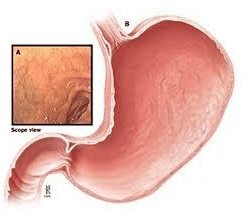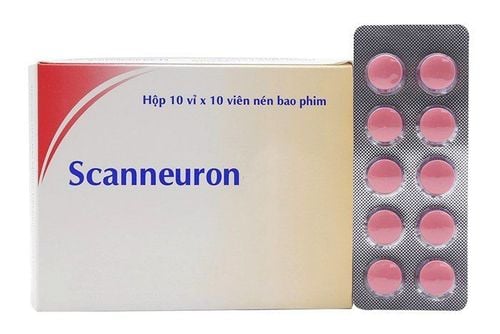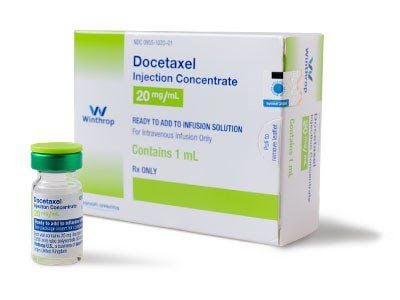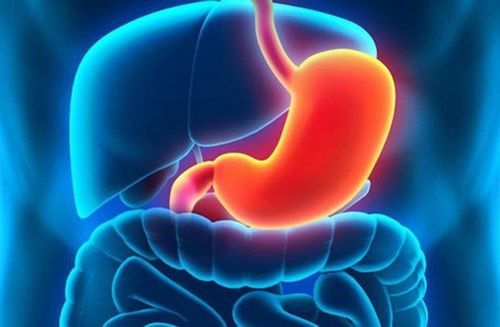This is an automatically translated article.
The article is professionally consulted by Master, Doctor Mai Vien Phuong - Gastroenterologist - Department of Medical Examination & Internal Medicine - Vinmec Central Park International General Hospital.There is evidence to suggest the occurrence of autoimmune gastritis (VDD) in patients with other autoimmune diseases. Up to one-third of patients have autoimmune thyroid disease and about 6-10% of patients with type 1 diabetes have VTE. Patients with glandular autoimmune disease often have a high rate of megaloblastic anemia. Other diseases that have been recorded at the same time with VSD include albinism, Addison's disease, and myasthenia gravis.
1. An overview of autoimmune gastritis
Autoimmune gastritis is an atrophic gastritis of the stomach lining that focuses mainly on the body and stomach due to the appearance of antibodies against the parietal cells of the stomach and intrinsic factors, which can lead to destruction of the mucosal layer. gastric mucosa, resulting in anemia and vitamin B12 deficiency, even leading to stomach cancer.

2. The relationship between VTE and H. pylori infection
H. pylori itself also causes chronic atrophic gastritis (VTNMDDM). There are some differences between autoimmune and H. pylori atrophic gastritis, but they are not always easily distinguishable. In many cases, patients with VTE may have H. pylori infection.
And conversely, in some patients infected with H. pylori may promote the occurrence of VTE due to a number of mechanisms such as increasing the number of B cells, T cells in the gastric mucosa, promoting the death process. programmed by inflammatory response, decreased acid secretion, increased gastrin concentration.
In addition, some authors hypothesized that there is a phenomenon of cross antigen presentation between H+K+ATPase and some proteins of H. pylori bacteria, leading to T-cell proliferation and production of cytokines by H+K+ATPase. Th1 cells. According to a study, the detection rate of antibodies against H+K+ATPase enzyme in H.Pylori infected patients is 20-30%. Thus, in fact, UTIs can be divided into three groups:
Group caused by H. pylori alone, characterized by diffuse inflammation, multiple foci of atrophic inflammation with intestinal metaplasia and no antibodies Group due to autoimmune mechanism alone with focal inflammatory lesions in the body, no lesions in the antrum, history and no current H. pylori infection The third group is patients with a combination of both causes Differences between gastritis Autoimmune gastritis and chronic atrophic gastritis due to H.Pylori
Autoimmune gastritis: There is a mechanism by antibodies against the enzyme H+K+ATPase, lesions are usually concentrated in the body. In the early stage: lesions are less difficult to detect on endoscopy, there may be microcytic iron deficiency anemia, late stage: pseudopolyposis atrophy in the body, macrocytic anemia due to vitamin B12 deficiency, dangerous dysplasia or gastric adenocarcinoma, increased risk of Carcinoid type I. Important treatment is vitamin B12 supplementation. Chronic atrophic gastritis caused by H.Pylori : Mechanism caused by H.Pylori, lesions concentrated in the antrum, endoscopic image: Atrophic mucosal inflammation from the antrum spreads to many areas of damage, Clinically without iron deficiency anemia, there is a risk of dysplasia or gastric adenocarcinoma. The most important treatment H.pylori.

Vinmec International General Hospital is one of the hospitals that not only ensures professional quality with a team of doctors, modern equipment and technology. The hospital provides comprehensive, professional medical examination, consultation and treatment services, civilized, polite, safe and maximum sterilization space. Customers when choosing to perform tests here can be completely assured of the accuracy of test results.
Please dial HOTLINE for more information or register for an appointment HERE. Download MyVinmec app to make appointments faster and to manage your bookings easily.
References
1.Carmel R(2996) Prevalence of undiagnosed pernicious anemia in the elderty Arch Intern Med, 156 1097-200. 2. Andres E, Serraj K (2012), Optimal management of pernicious anemia. JBlood Med, 3:97-103. 3. S Strickland RG, Mackay IR (1973), A reappraisal significance of the nature and of chronic atrophic gastritis. Am J Dig Dis, 18:426-40. 4. Park JY, Lam-Himlin D, Vemulapalli R (2013). Review of autoimmune metaplastic atrophic gastritis. Gastrointest Endosc, 77(2):284-92. 5. Kulnigg-Dabsch S.(2016), “Autoimmune gastritis”, Wien Med Wochenschr 166(13-14):424-430














